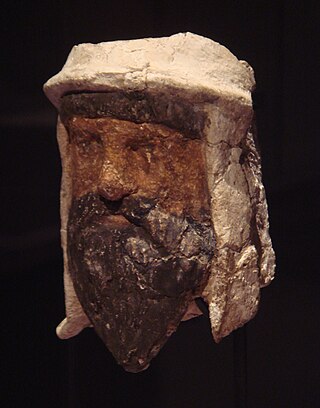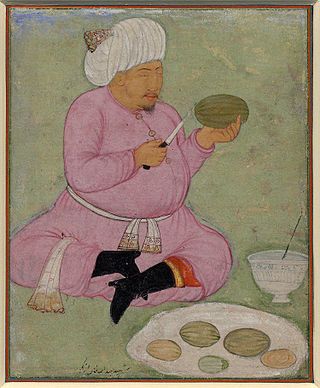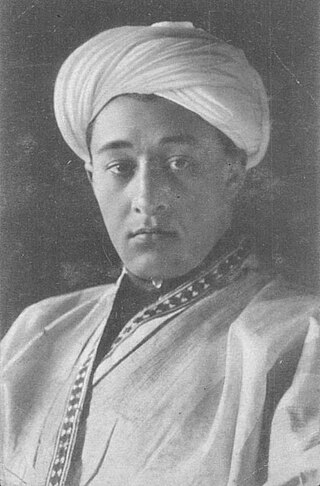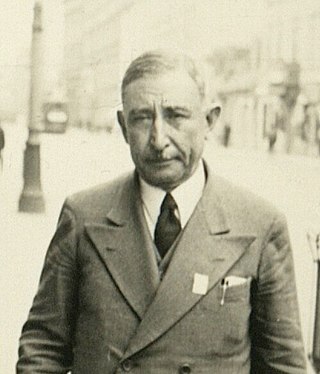
Tajikistan harkens to the Samanid Empire (819–999). The Tajik people came under Russian rule in the 1860s. The Basmachi revolt broke out in the wake of the Russian Revolution of 1917 and was quelled in the early 1920s during the Russian Civil War. In 1924, Tajikistan became an Autonomous Soviet Socialist Republic of the Soviet Union, the Tajik ASSR, within Uzbekistan. In 1929, Tajikistan was made one of the component republics of the Soviet Union – Tajik Soviet Socialist Republic – and it kept that status until gaining independence 1991 after the dissolution of the Soviet Union.

Bukhara is the seventh-largest city in Uzbekistan by population, with 280,187 residents as of 1 January 2020. It is the capital of Bukhara Region. The mother tongue of the majority of people of Bukhara is the Tajik dialect of the Persian language, although Uzbek is spoken as a second language by most residents.

Bukharan Jews, in modern times called Bukharian Jews, are an ethnoreligious Jewish sub-group of Central Asia that historically spoke Bukharian, a Judeo-Tajik dialect of the Tajik language, in turn a variety of the Persian language. Their name comes from the former Central Asian Emirate of Bukhara, which once had a sizable Jewish population. Bukharan Jews are of Persian-Jewish ethnicity, along with the Iranian Jews, Afghan Jews, and the Mountain Jews, all of whom fall under the category of Mizrahi Jews.

Russian Turkestan was the western part of Turkestan within the Russian Empire’s Central Asian territories, and was administered as a Krai or Governor-Generalship. It comprised the oasis region to the south of the Kazakh Steppe, but not the protectorates of the Emirate of Bukhara and the Khanate of Khiva. It was populated by speakers of Russian, Uzbek, Kazakh, Kyrgyz, and Tajik.

Abdullah Khan (1533/4–1598), known as "The Old Khan", was an Uzbek ruler of the Khanate of Bukhara (1500–1785). He was the last uncontested Shaybanid Khan of Bukhara from 1583 until his death.

Fayzulla Ubaydullayevich Xoʻjayev was a Bukharan politician that served as the first head of the Bukharan People's Soviet Republic, which would later form part of the Uzbek Soviet Socialist Republic.

The Khanate of Khiva was a Central Asian polity that existed in the historical region of Khwarazm from 1511 to 1920, except for a period of Afsharid occupation by Nader Shah between 1740 and 1746. Centred in the irrigated plains of the lower Amu Darya, south of the Aral Sea, with the capital in the city of Khiva. It covered present-day western Uzbekistan, southwestern Kazakhstan and much of Turkmenistan before the Russian conquest at the second half of the 19th century.

The Emirate of Bukhara was a Muslim polity in Central Asia that existed from 1785 to 1920 in what is now Uzbekistan, Tajikistan, Turkmenistan and Kazakhstan. It occupied the land between the Amu Darya and Syr Darya rivers, known formerly as Transoxiana. Its core territory was the fertile land along the lower Zarafshon river, and its urban centres were the ancient cities of Samarqand and the emirate's capital, Bukhara. It was contemporaneous with the Khanate of Khiva to the west, in Khwarazm, and the Khanate of Kokand to the east, in Fergana. In 1920, it ceased to exist with the establishment of the Bukharan People's Soviet Republic.

The Khanate of Bukhara was an Uzbek state in Central Asia from 1501 to 1785, founded by the Abu'l-Khayrid dynasty, a branch of the Shaybanids. From 1533 to 1540, Bukhara briefly became its capital during the reign of Ubaydallah Khan. The Khanate reached its greatest extent and influence under its penultimate Abu'l-Khayrid ruler, the scholarly Abdullah Khan II.

Emir Sayyid Mir Muhammad Alim Khan was the last emir of the Uzbek Manghit dynasty, rulers of the Emirate of Bukhara in Central Asia. Although Bukhara was a protectorate of the Russian Empire from 1873, the Emir presided over the internal affairs of his emirate as an absolute monarch and reigned from 3 January 1911 to 30 August 1920.
The Young Bukharans or Mladobukharans were a secret society founded in Bukhara in 1909, which was part of the jadidist movement seeking to reform and modernize Central Asia along Western-scientific lines.
Chala is an Uzbek term meaning "neither this nor that," referring to Bukharan Jews who were coerced into converting to Islam from the late eighteenth century onwards. In response, these Chala Jews outwardly practiced Islam, but secretly retained their Jewish traditions. These crypto-Jews married among themselves and lived in their own separate neighborhoods that bordered on existing Jewish neighborhoods. The Chala Jews carry a very similar story to the Dönmeh and to the Marranos of Spain.
The Siberian Bukharans are an ethnographic and sociocultural group in Siberia. They constituted a significant part of the Tobol-Irtysh and Tom groups of Siberian Tatars.
The history of the Jews in Kyrgyzstan is linked directly to the history of the Bukharan Jews of Uzbekistan. Until the 20th century, most Jews living in the Kyrgyz areas were of the Bukharian Jewish community. However, during the 20th century, large amounts of European Jews began to emigrate to Kyrgyzstan which was then part of the Soviet Union, and a small amount of them still live in the country.

The Bukhara operation (1920), was a military conflict fought between the Russian Soviet Federative Socialist Republic and the Young Bukharans against the Emirate of Bukhara. The war lasted between 28 August and 2 September 1920, ending in the defeat of the Emirate of Bukhara, which was instead replaced by the RSFSR-controlled Bukharan People's Soviet Republic.

The Bukharan People's Soviet Republic was a Soviet state that governed the former Emirate of Bukhara during the years immediately following the Russian Revolution. In 1924, its name was changed to the Bukharan Socialist Soviet Republic. After the redrawing of regional borders, its territory was assigned mostly to the Uzbek SSR and some to the Turkmen SSR.
The history of the Jews in Central Asia dates back centuries, where Jews have lived in countries which include Kyrgyzstan, Kazakhstan, Tajikistan, Turkmenistan, and Uzbekistan.

The siege of Samarkand was a military engagement fought in Samarkand, Uzbekistan in 1868 between the Russian Empire and a combined army of forces from the Bokharan Emirate, and several Uzbek tribes. During the engagement, a Russian garrison successfully repelled multiple attempts by the besieging allied army to storm the city. The Russian victory solidified imperial control over the new state of Russian Turkestan, and caused the partial collapse of the Bukharan Emirate.
The Bukharan Revolution refers to the events of 1917–1925, which led to the elimination of the Emirate of Bukhara in 1920, the formation of the Bukharan People's Soviet Republic, the intervention of the Red Army, the mass armed resistance of the population and its suppression, the inclusion of the republic into the Soviet Union on 27 October 1924, as a separate union republic, the elimination of the newly established republic as a result of national delimitation and the formation of the Uzbek SSR, the Turkmen SSR and Tajik ASSR in 1924.

Osman Kocaoğlu was the first president of the former Bukharan People's Soviet Republic. Although his name was romanized as Polat Usman Khodzhayev in Russian, he spent most of his life in Turkey and Osman Kocaoğlu is the name he assumed in Turkey.













